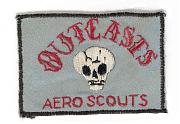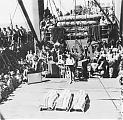General David Petraeus knows all about these mind games......
So I get escorted across Baghdad's concrete-ringed International Zone, around the manicured lawns of the Republican Palace, up its marbled stairs, past ambassadors and generals, through a seemingly endless series of gates and checkpoints, and into Petraeus' office. But even this far inside the US war machine, I'm expecting a frontal assault on network-centric warfare.
Instead, he sings me a love song.
"It's definitely here to stay. It's just going to keep getting greater and greater and greater," Petraeus says. I settle on a couch, and he shuts off the air conditioner. "I was a skeptic of network-centric warfare for years," he confesses. But thanks to years of wartime funding, he says, the military now has the ability "
to transmit data, full-motion video, still photos, images, information. So you can more effectively determine who the enemy is, find them and kill or capture, and have a sense of what's going on in the area as you do it — where the friendlies are, and which platform you want to bring to bear."
Of course, he adds, he doesn't believe the Rumsfeld-era idea that you can get away with fewer, better-networked troops. Petraeus is the man behind the "surge," after all. Anyone who thinks you don't need massing of troops is living in an "academic world," he says. And Petraeus believes
"the most important network is still the one that is between the ears of commanders and staff officers."
Yet he's a believer, just like a whole lot of other Army generals. He supports the $230 billion plan to wire the Army, a gargantuan commitment to network-centric war. "We realized very quickly you could do incredible stuff with this," he says. "It was revolutionary. It was."
I press my hands to my forehead. What about all the cultural understanding, I ask him. What about nation-building? What about your counterinsurgency manual?
"Well," Petraeus says,
"it doesn't say that the best weapons don't shoot. It says sometimes the best weapons don't shoot. Sometimes the best weapons do shoot." A war like Iraq is a mix, he adds: In one part of the country, the military is reinforcing the society, building things; in another, it's breaking them — waging "major combat operations" that aren't all that different from what might have gone down in 2003. And this technology, he says, it's pretty good at 2003-style war.












Bookmarks